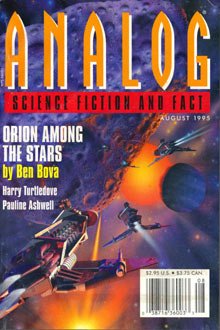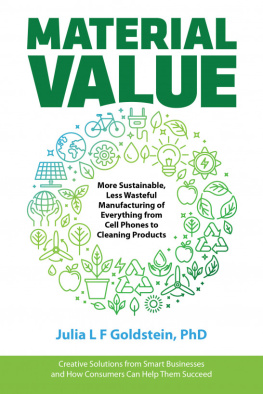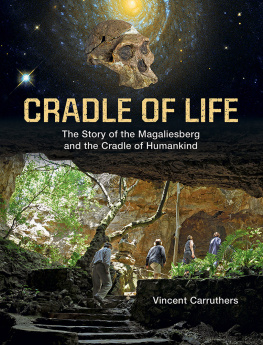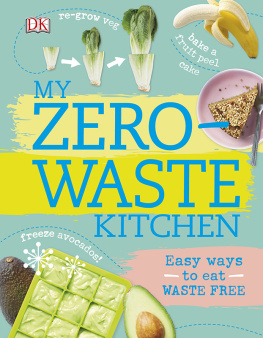CRADLE TO CRADLE
Michael Braungart was in the front rank of 1960s scientistswho addressed environmental issues and while he was achemistry student at Hannover University he founded thechemistry division of Greenpeace, and was one of thefounders of Germany's Green Party. He has always worked'for himself' and set up his Hamburg research company EPEAin 1988. It was when he established a New York office forEPEA that he met Bill McDonough, and together they createdan American company, MBDC, in 1995. Michael has a lifelongprofessorship at the University of Luneburg in chemistryand process engineering, and in 2008 he took the joint chaircreated for him at Erasmus University in Rotterdam and inDelft, in both industrial ecology and Cradle to Cradlemanagement for companies. He continues to publish as achemist and to speak widely as Braungart Consulting.
William McDonough is an architect and founding partner ofWilliam McDonough + Partners which specialises in architectureand community design and has studios in Charlottesville,Virginia, and San Francisco. In 1996, he received thePresidential Award for Sustainable Development. In 1999Time magazine recognised him as a 'Hero for the Planet',stating that 'his utopianism is grounded in a unifiedphilosophy that... is changing the design of the world.' Timeagain recognised Bill McDonough and Michael Braungart as'Heroes of the Environment' in October 2007. He was electeda 2008 International Fellow of the Royal Institute of BritishArchitects. He is on the management committee of theUniversity of Cambridge's 'Business and the EnvironmentProgramme', which is steered by the Prince of Wales, and onthe China-US Center for Sustainable Development.
This eBook is copyright material and must not be copied, reproduced, transferred, distributed, leased, licensed or publicly performed or used in any way except as specifically permitted in writing by the publishers, as allowed under the terms and conditions under which it was purchased or as strictly permitted by applicable copyright law. Any unauthorised distribution or use of this text may be a direct infringement of the author's and publisher's rights and those responsible may be liable in law accordingly.
ISBN 9781407021324
Version 1.0
www.randomhouse.co.uk
Published by Vintage 2009
2 4 6 8 10 9 7 5 3 1
Copyright William McDonough and Michael Braungart 2008
William McDonough and Michael Braungart have asserted their rightunder the Copyright, Designs and Patents Act 1988 to beidentified as the authors of this work
This electronic book is sold subject to the condition that it shall not by way of trade or otherwise, be lent, resold, hired out, or otherwise circulated without the publisher's prior consent in any form other than that in which it is published and without a similar condition including this condition being imposed on the subsequent purchaser
First published in the United States or America in 2002 by NorthPoint Press, a division of Farrar, Straus and Giroux
First published in Great Britain in 2008 Jonathan Cape
Vintage
Random House, 20 Vauxhall Bridge Road,
London SW1V 2SA
www.vintage-books.co.uk
Addresses for companies within The Random House Group Limitedcan be found at: www.randomhouse.co.uk/offices.htm
The Random House Group Limited Reg. No. 954009
A CIP catalogue record for this book
is available from the British Library
ISBN: 9781407021324
Version 1.0
To our families,
and to all of the children of
all species for all time
The world will not evolve past its current state of crisis by using the same
thinking that created the situation.
ALBERT EINSTEIN
Glance at the sun.
See the moon and the stars.
Gaze at the beauty of earth's greenings.
Now, think.
HILDEGARD VON BINGEN
What you people call your natural resources our people call our relatives.
OREN LYONS, faith keeper of the Onondaga
cradle
to
cradle
Introduction to the 2008
edition
In the twenty-some years since I came up with the phrase "cradleto cradle", it has become as complicated as a musical score. NowI can explain to the makers of photocopying machines what itmeans in their terms, and to new prawn farmers how to play it.But it is rather like the story I heard recently of a five-year-oldchild who knew only one Felix, and then was introduced to anotherFelix. He says to his father, "Did you know that Felix got anew face this week?"
This book still describes the underlying identity of Cradleto Cradle, but the concept has been rolled out much furtherthan I foresaw when the book was first published in 2002.
In the nineteenth century various writers used the phrase"the hand that rocks the cradle is the hand that rules theworld"and to them this meant that the way we raise our childrenwould do more to change the world than empire-buildersand new industries. The hands that rock Cradle to Cradle todayfit the phrase, I think, as our agenda is also about finding nurturingsolutions very different to the often outrageous initiativesthat harm the environment, sometimes by the same sort of institutions.Cradle to Cradle tries to put human beings in the same"species" picture as other living thingsand to us, a misuse ofmaterial resources is not just suicidal for future human generationsbut catastrophic for the future of life.
However, another guiding principle is that we can discussCradle to Cradle solutions in good humoureven with wit. Thetone of the pages that follow is not generally that of most "environmentaljournalism" of the past six years. Early agriculturalistsaccepted "the law of return", which simply meant that thefarmer should try to repay the earth for what he took from it.But he did not sit at his fireside and chew his nails, asking himselfwhether he got the best of the bargain. It was not a "law"which worried himit was just clearly the right thing to do.Cradle to Cradle is a law of return but with materials ratherthan food-crops. Of course, materials science is harder thanfarming, but we can do it. There is no reason to adopt thestormy tones that other environmentalists often use.
This book describes how Cradle to Cradle got its footholdin the United States, but it doesn't describe how we watchedwhile the greenhouse effect, the loss of species diversity, contaminationof the biosphere, soil and ocean pollution, and otherissues took the media's attention. We felt then, and still feel,that environmental protection is interpreted as the best solutionto these problems, but doesn't this mean that our aim is simplyto be "less bad". If the assumption is that human beings arebad for the planet, surely the best thing is for us not to be hereat all. Zero emissions, zero footprint, reduction, avoidance,minimalizationthe guilt language is very popular.
More control (being "less bad") is not the same as beinggood. It is not protecting your child if you beat him three times insteadof five, and it is not protecting the environment simply touse your car less often. When you do something wrong, don't tryto improve upon it. It is not completely about frequency, as thenext sentence illustrates: I was recently shown a new photocopyingmachine made with far better components, and which rantwice as fast on less energy consumption, but the paper still couldnot be composted. It could not go back into any biological cycle.Yes, it is "less bad" but the optimizations are in the wrong place.
Likewise, compared to tire components in the past, the particlesof latex tires today have become much smaller. In someways this change has been good, but latex is one of the key sensitizingingredients provoking asthma. Now we can make "better"tires but as a result probably more people are unwell. Arewe too quick to embrace some "solutions"? Britain has plannedto build a hundred more waste incineratorswhy? Throughincineration you lose all the nutrients which should go back intotechnical or biological cycles. Copper in that waste, for instance,is worth about 80 million a yearand new copper is so muchmore rare than oil. Phosphate is also rareit is incorporated insludgeand then it too is lost when you put it into incineratorswith municipal waste.






